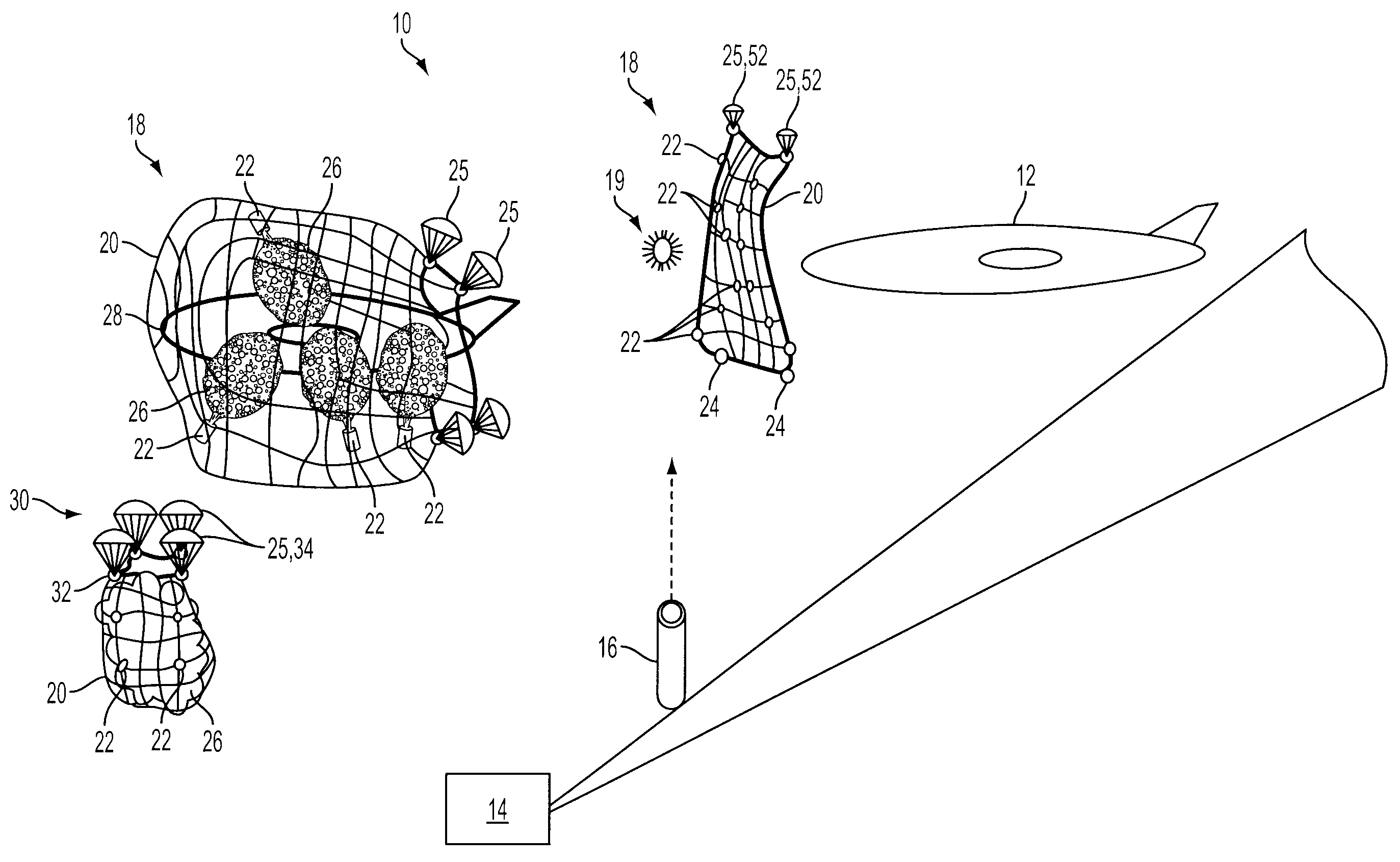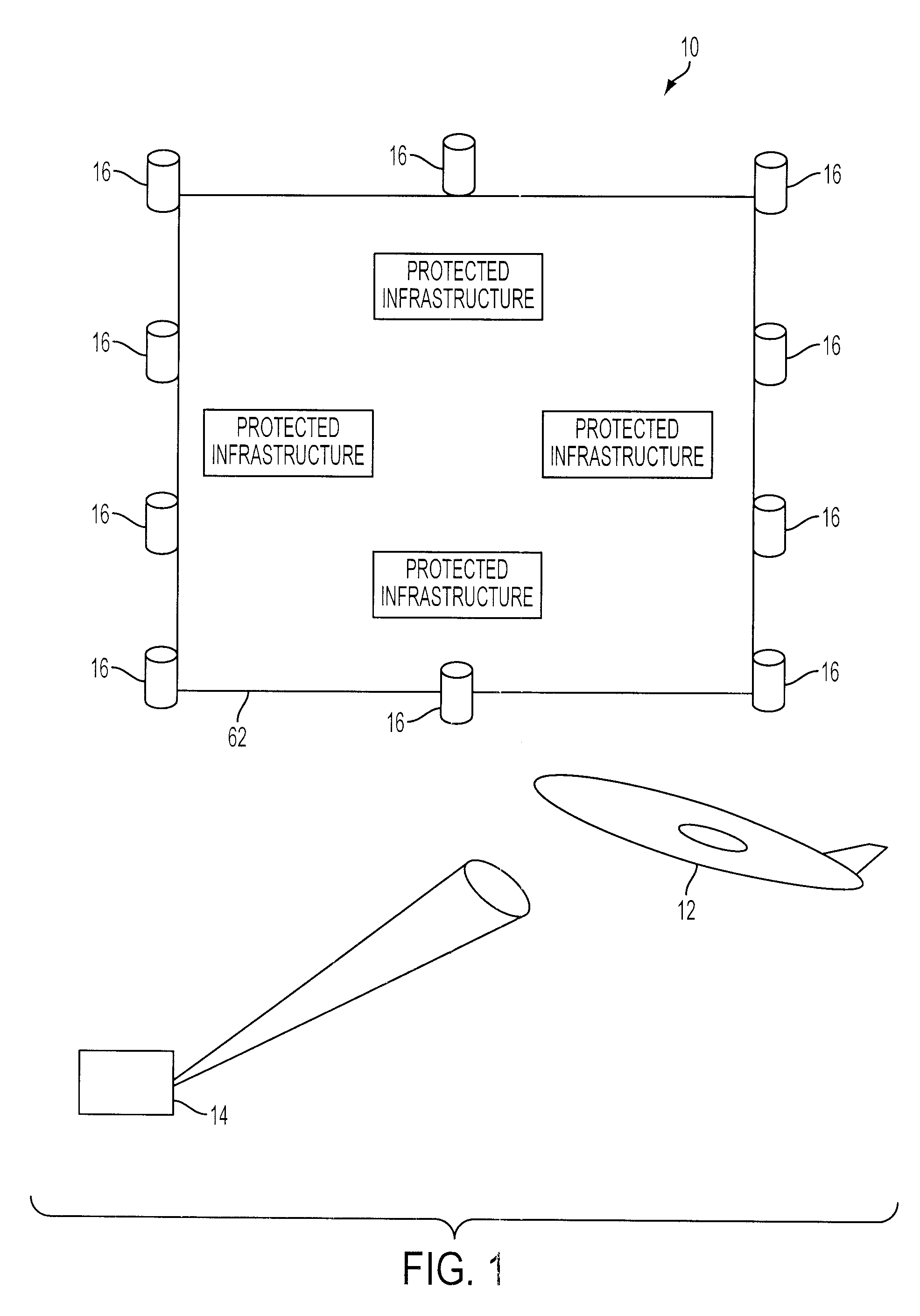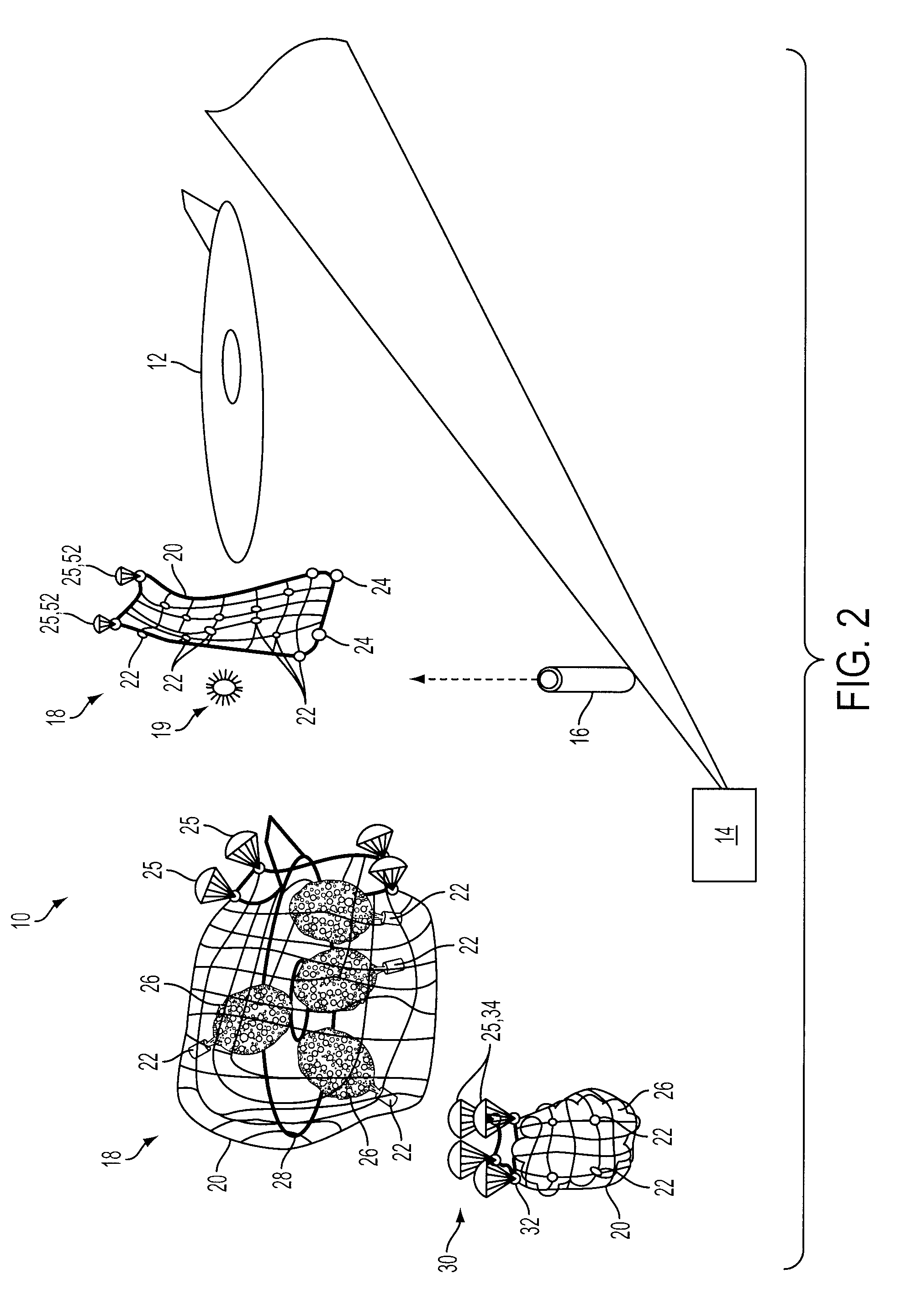Catch and snare system for an unmanned aerial vehicle
a technology for aerial vehicles and traps, applied in emergency apparatuses, transportation and packaging, weapons, etc., can solve the problems of ineffective previous intercept systems, negative effect on flying properties, and debris field, and achieve the effect of preventing chemical releas
- Summary
- Abstract
- Description
- Claims
- Application Information
AI Technical Summary
Benefits of technology
Problems solved by technology
Method used
Image
Examples
Embodiment Construction
[0019]In one aspect, as shown in FIGS. 1-7, the present invention provides a catch and snare system 10 for an unmanned aerial vehicle 12 comprising: (a) a detection system 14, (b) a deployment system 16 in communication with the detection system 14, (c) a capture system 18 placed at an interference position by the deployment system 16, wherein the capture system 18 comprises a net 20, a plurality of foam deploying canisters 22 attached to the net 20 for deploying foam, and at least one canister 24 for deploying a decelerating parachute 25 attached to the net 20, wherein the foam 26 prevents the release of chemical or biological agents from the captured unmanned aerial vehicle 28 into the environment, and (d) a descent system 30 to bring the capture system 18 and a captured unmanned aerial vehicle 28 back to earth.
[0020]As used herein, there are a variety of detection systems known in the art for detecting an unmanned aerial vehicle (UAV) 12. For example, the detection system 14 may ...
PUM
 Login to View More
Login to View More Abstract
Description
Claims
Application Information
 Login to View More
Login to View More - R&D
- Intellectual Property
- Life Sciences
- Materials
- Tech Scout
- Unparalleled Data Quality
- Higher Quality Content
- 60% Fewer Hallucinations
Browse by: Latest US Patents, China's latest patents, Technical Efficacy Thesaurus, Application Domain, Technology Topic, Popular Technical Reports.
© 2025 PatSnap. All rights reserved.Legal|Privacy policy|Modern Slavery Act Transparency Statement|Sitemap|About US| Contact US: help@patsnap.com



